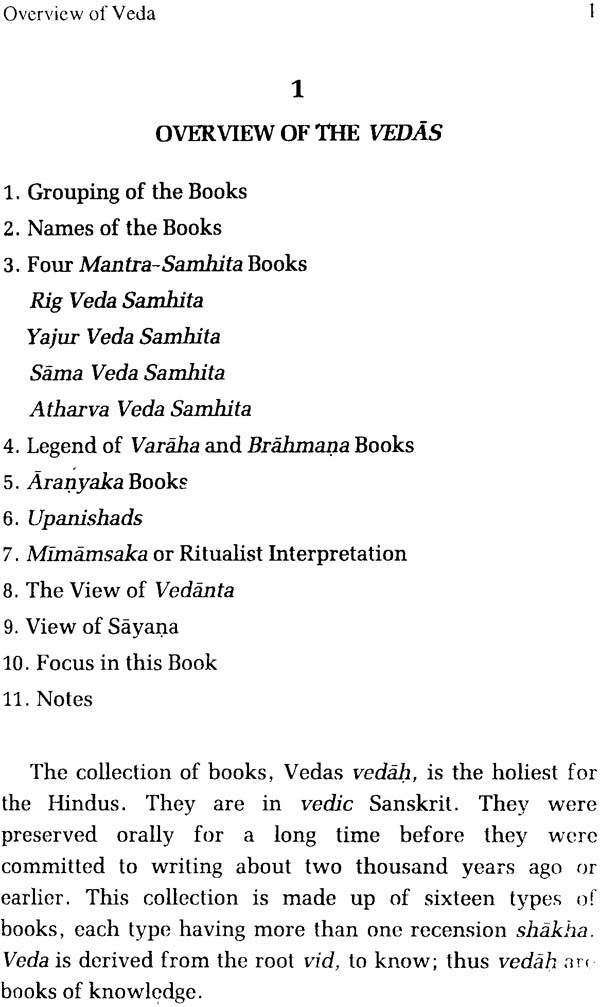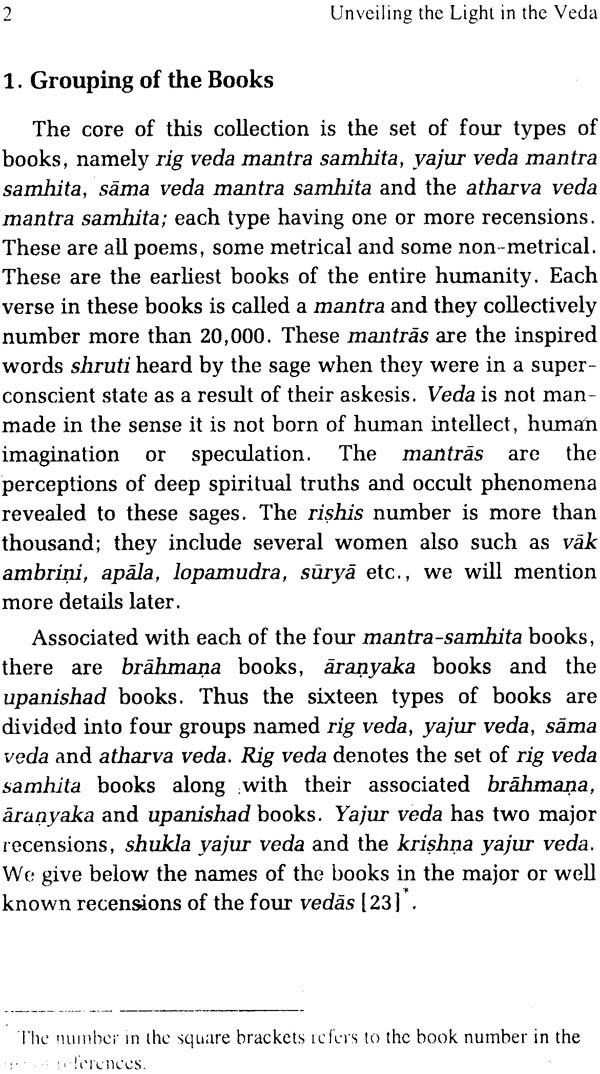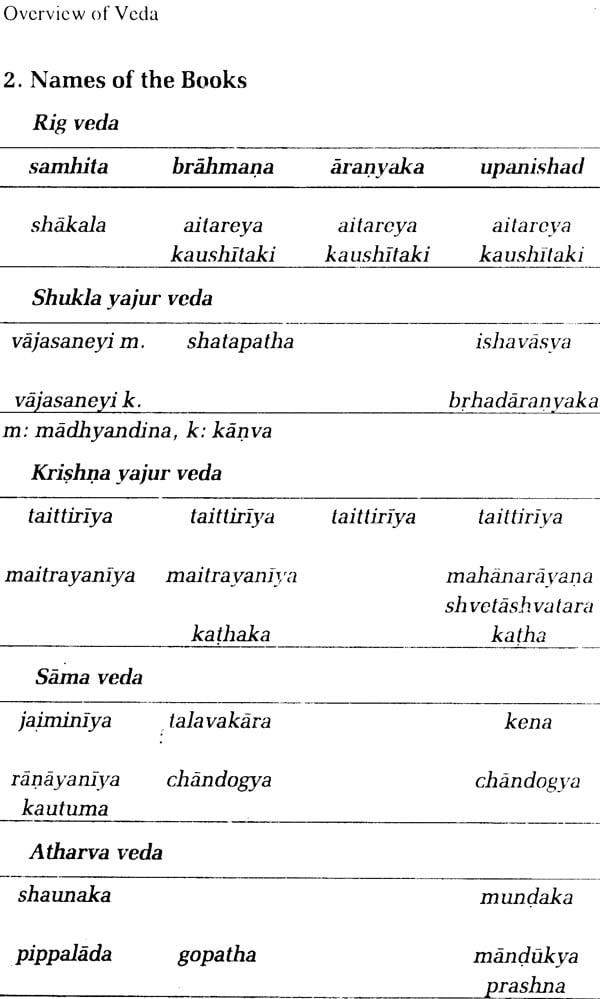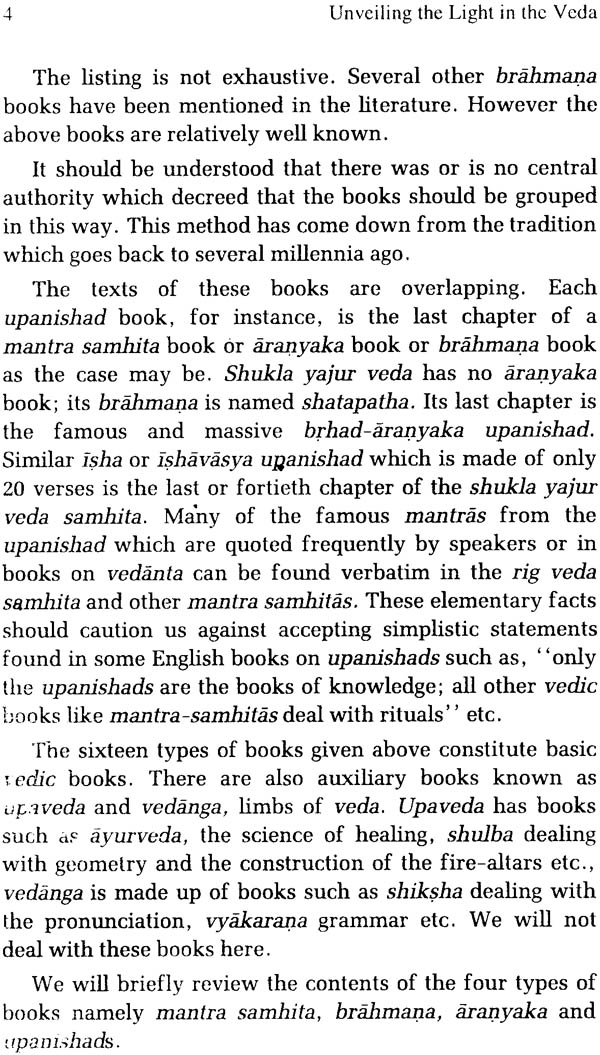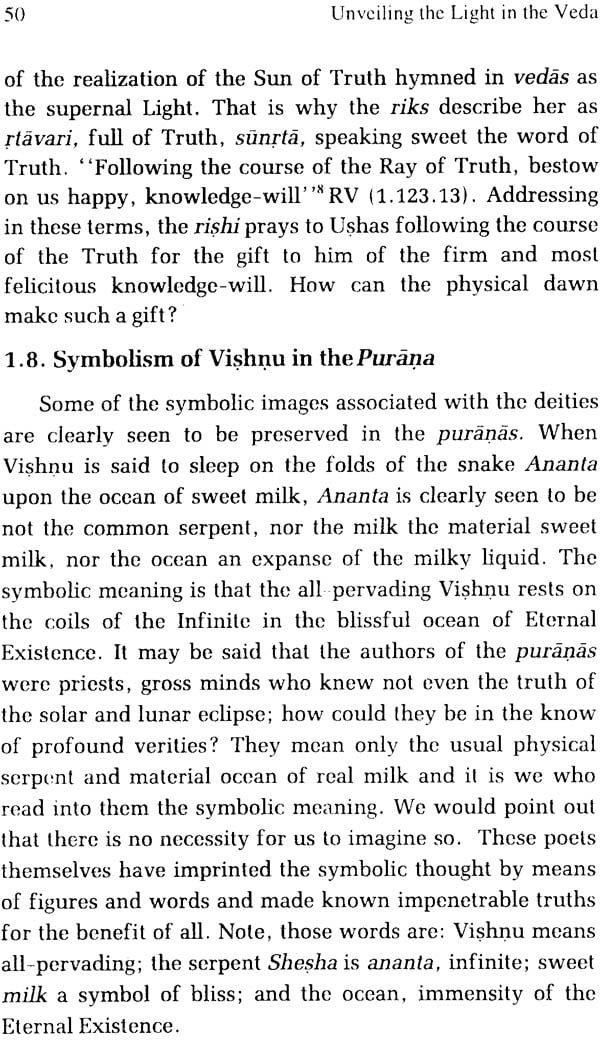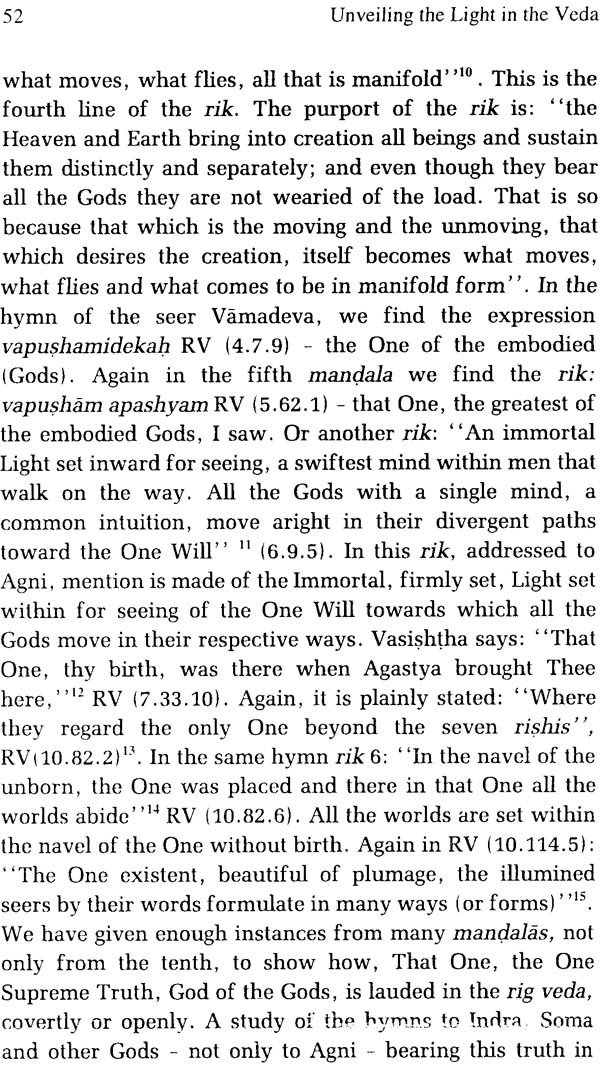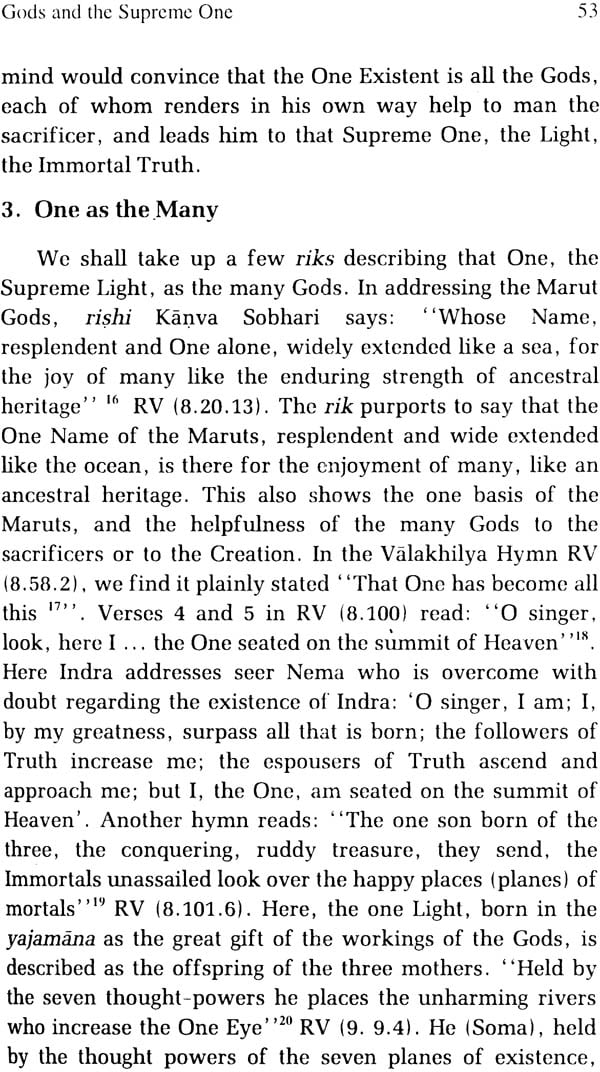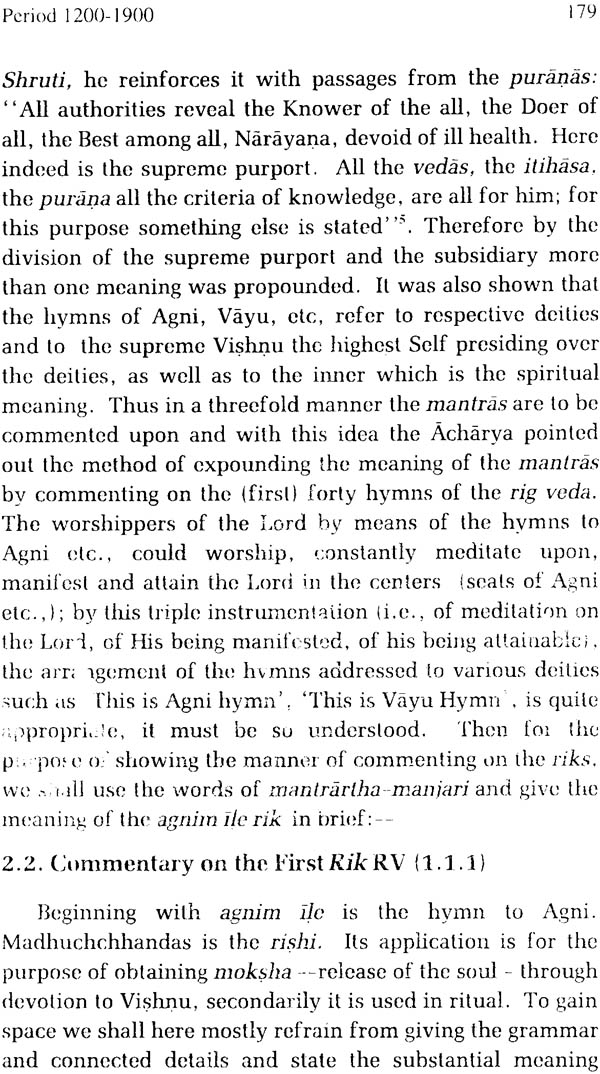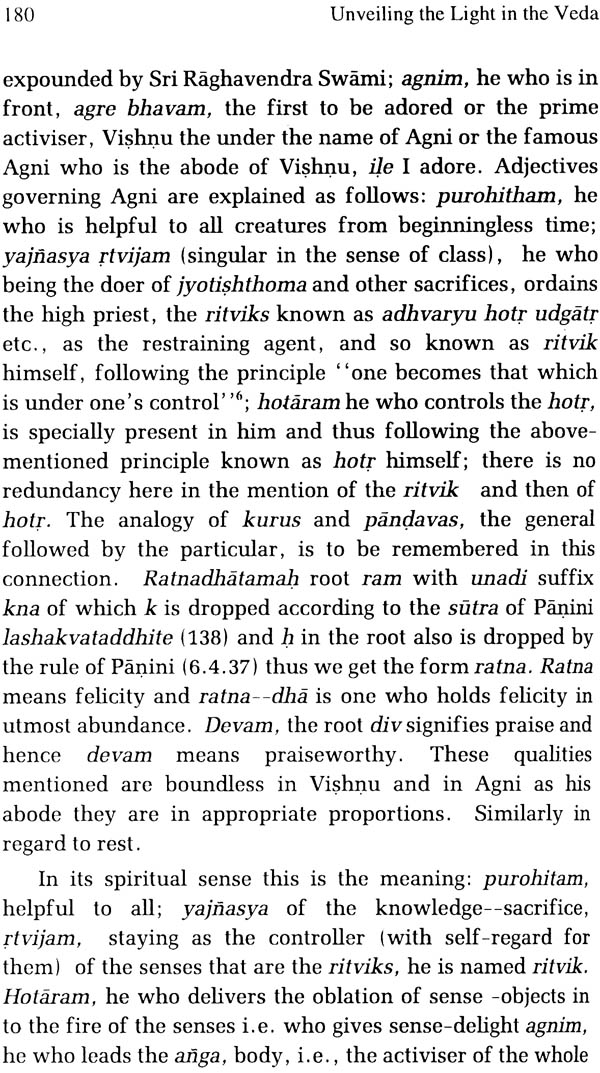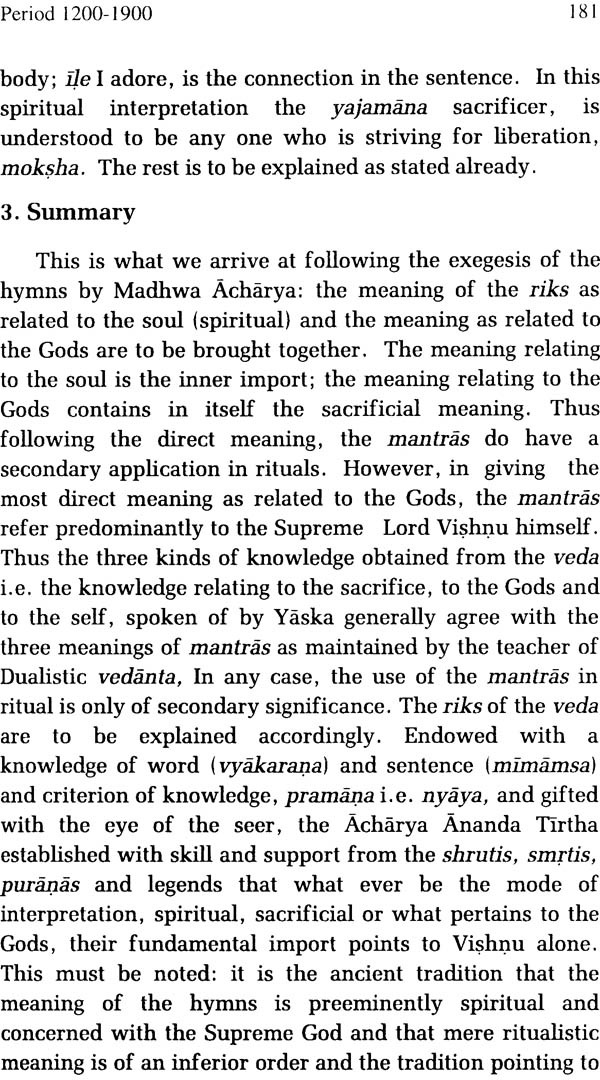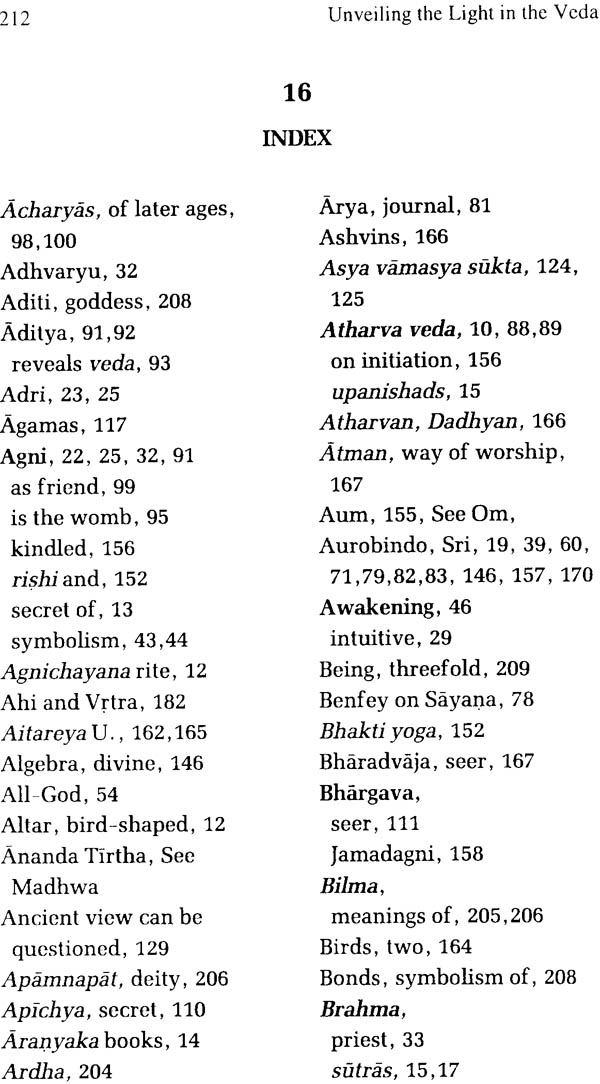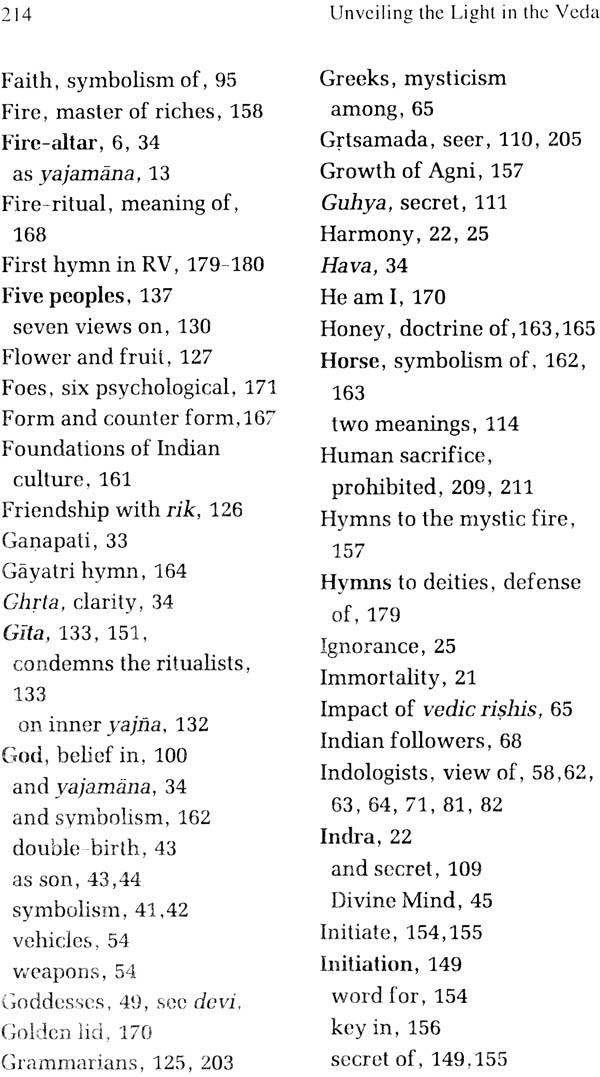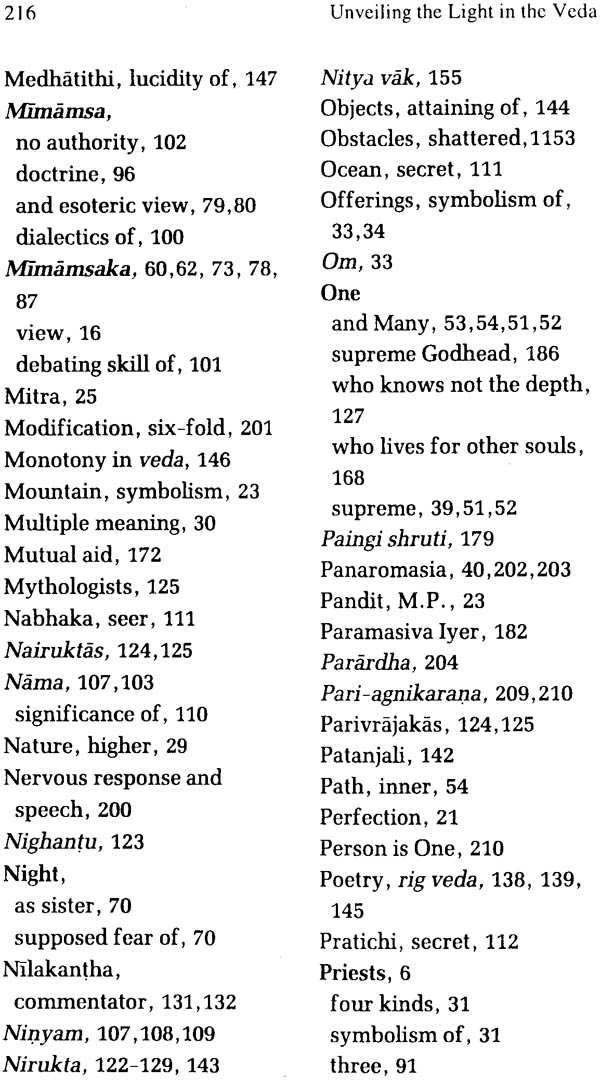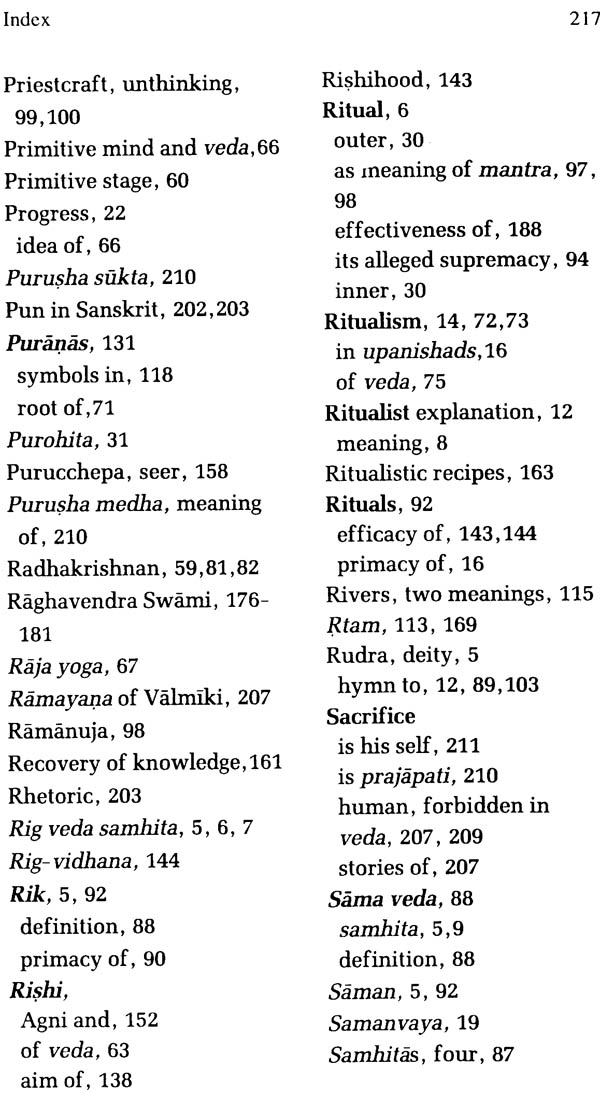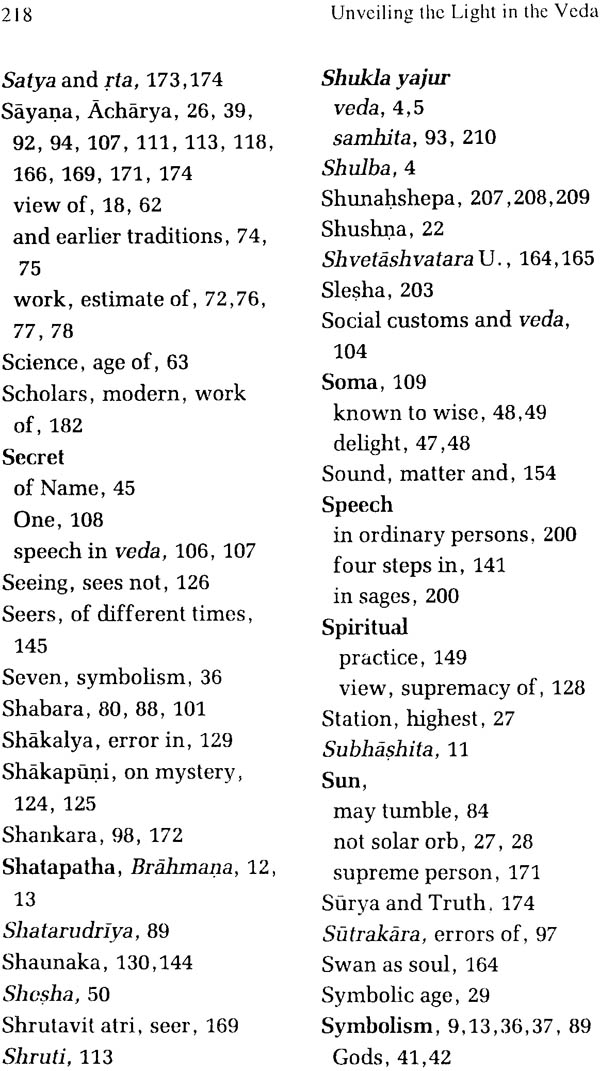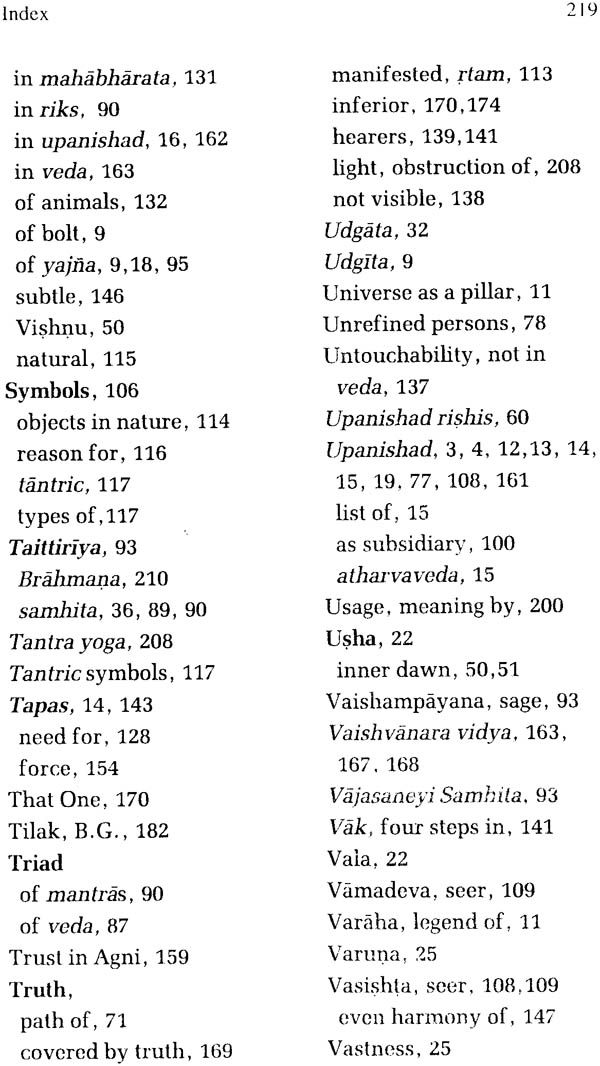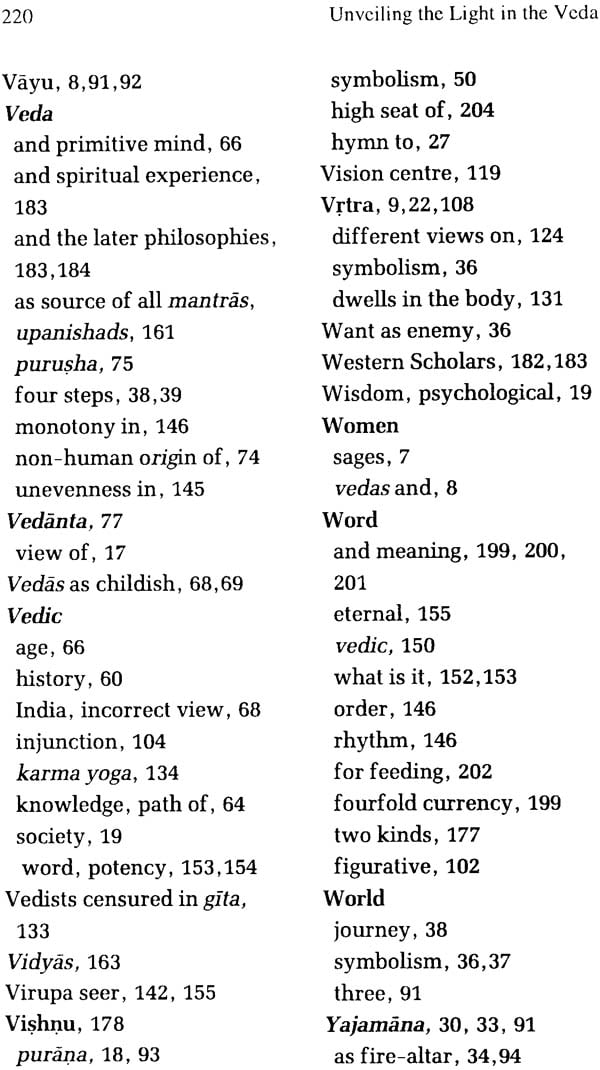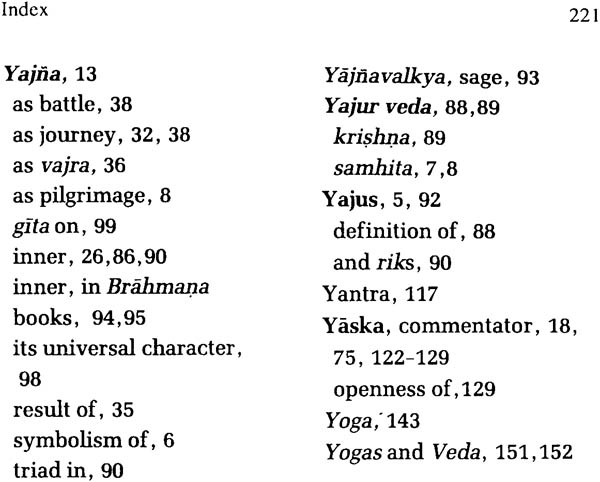
Unveiling The Light In The Veda
Book Specification
| Item Code: | NAF581 |
| Author: | Dr. R.L. Kashyap |
| Publisher: | Sri Satguru Publications |
| Language: | English |
| Edition: | 2001 |
| ISBN: | 8170307015 |
| Pages: | 266 |
| Cover: | Hardcover |
| Other Details | 9.0 inch X 6.0 inch |
| Weight | 460 gm |
Book Description
The brilliant intellect of Sri T. V. kapali sastry is patent in his writings in Sanskrit, English, Tamil and Telugu published in 12 volumes. His magnum opus, Siddhanjana, commentary on the First Ashtaka of the Rig Veda, explores the hitherto neglected psychological and spiritual sides of the ancient hymnal.
After a life-long study, verification in personal inner life and confirmation in other branches of Indian Wisdom, he began writing his commentary on the Rig Veda in his sixtieth year (1945). In his Bhumika, Introduction, he presents his approach, deriving from ancient rishis like Yaska, medieval teacher slike Ananda Tirtha and the perceptions of modern seers like Sri Aurobindo. He works out this psychological interpretation guided by the principles of the mystic symbolism of the vedic rishis in his verse-by-verse explanation. He finds astonishing echoes of the veda in the tantra, in though and in practice. He holds that the tantra is as old as the Veda and both have a common origin. He lays bare the secrets of some of the legends in the purana.
The tradition of the spiritual interpretation of the veda is ancient; it has 'been referred to by Yaska whose commentary nirukta is the earliest one available to us. There were many commentators prior to him also. The gloss on nirukta by Durgacharya suggests that the discipline of nirukta as an aid to the study of the vedic corpus, vedanga, was extant in fourteen divisions, chaturdasha-prabhedam. In other words, there were attempts at comprehensive traditional interpretation of the rig veda mantras based on intuition obtained by fourteen authorities. Yaska, who is regarded as the fourteenth, himself refers to many authors of earlier niruktas: Shakatayana, Shakapuni, Aupamanyava, Audumbarayana Aurnavabha, Taitiki, Sthaulashthlvi, Kathakya, Agrayana, Gargya, Galava, Kautsa, Shakalya, Varshyani, Charmashiras, Shatavalaksha and so on. Yaska's work was so perfect and so convincing that the other works in the field were forgotten, and soon came to be lost. Yaska's nirukta is the only nirukta that has been extant for a long time now.
It is necessary to recognise that the vedic Sanskrit was different from the language used by common people even though both use the same set of words. The rules of grammar must naturally be expected to be same for common speech, what Yaska and Panini known as bhashya, and for the vedic mantra arsha, naigama, anvadhyaya or vaidika, nirukta, 1.4.
But the usage of words in mantras is often different from ordinary usage; as for instance, the word danta, meaning disciplined, from dama upashame, in ordinary language taking the form of damuna, in the mantras, nirukta, (2.2) or the word ushna, meaning heat from usha dahc, becoming ushta in the mantras, or again sadhyate in normal speech becoming sadha m the mantras. A knowledge of nirukta is indispensable for understanding the true import of the vedic language. The word nirukta has the sense of ascertainment of the meaning of what has been said the explanation of the various nuances of meaning and arriving at the correct import.
An attempt to interpret the true import of the vedic mantras is in evidence even in the brahmana-passages, which are an integral part of the vedic corpus. The need for such an attempt was felt when the generation of the direct 'seers' of the mantras was succeeded by sages who did not have this advantage but were interested in understanding the import of the mantras taught by their forbears. Yaska makes an interesting remark nirukta (1.20); It is paraphrased here; The original quote is in note 1.
The rishis were, of course, responsible for the mantras, which however were not intellectually conceived and deliberately composed, but directly perceived and involuntarily articulated. The aspects of truth dharmanah were by the power of penance actually experienced sakshatkrta, in their interior. But when they felt like communicating these mantras, crystallised experiences of an unusual kind to their children, disciples or others interested, they had also to append explanations and instructions upadesha, for these latter and lesser folk had no experience of their own to verify, corroborate or illumine the truths contained in the mantras. But this instruction, with the seers themselves as its source, marked the origin of the traditional line of interpretation (called sampradaya, suggested by the word used by Yaska in the above passage, sampraduhj. Later generations strove to preserve and continue this instruction, for without it the vedic mantras would largely remain obscure and unintelligible. The preservation and continuation necessarily involved effort glayantah, not only in the form of intellectual exercise in the direction of understanding aright the sound and the sense of the mantras, but also in the form of earnest and austere living (called tapas), in order to appreciate the true import of the mantras. What results from such effort is described by Yaska as bihna, alternately bhilma whose meaning is clarified in the appendix.
The effort on the part of the non-seers would be in terms of intense and earnest contemplation on the true import of the vedic mantra which is called tapas. This is seen by Yaska as the best and most expedient substitute for direct vision which characterises a rishi. Hence, Yaska said that the vedic truths are impossible to be directly perceived by one who is not himself a seer or who has not engaged himself in austerities, tapas, nirukta 13.12; See note 2 for the original quote.
In recent times, it is Kapali Sastry who has inherited this tapas-orientation in interpreting the vedic mantras. He is convinced that the vedic corpus has a secret, which cannot be unraveled without tapas. Inspired and guided by the master of tapas, Sri Aurobindo, he has engaged himself in tapasya and thus has acquired the ability and eligibility to interpret the vedic mantras aright. The results of his labour are explained here succinctly and significantly by my good friend, Dr. R.L. Kashyap, who is himself inspired by Kapali Sastry's great work. The rich heritage of the vedas consists not in the ritualistic framework into which it was forced in later times but in the spiritual and esoteric interpretation. This was made clear by Kapali Sastry and the present publication amply justifies that stand.
The effort of Dr. R.L. Kashyap to project the approach of Kapali Sastry, which in fact is traditional and also rational, is commendable as it focuses the attention of modern scholars and students of the vedic lore on the only valid interpretation of veda.
Note 1: sakshatkrtadharmana rshayo babhuvuh. Te varebhyo sakshatkrta dharmabhya upadeshena mantran sampraduh. upadeshaya glayanto vare bilmagrahanayemam grantham samamnasishuh. vedam cha vedangani cha. bilmam bhilmam bhasanamiti va. Nid.20)
Note 2: na hyeshu pratyakshamastyan rsheratapaso va. NK13.12).
| Foreword | xiii | |
| The Evolution of Siddhanjana | xvii | |
| Extended Summary | xxi | |
| Compiler's Note | xxvii | |
| Abbreviations | xxx | |
| Transliteration Scheme | xxxi | |
| 1 | Overview of Vedas | 1 |
| 2 | Spiritual Interpretation and the Symbolism of Yajna | 20 |
| 3 | The Gods and the Supreme One | 41 |
| 4 | Critique of the Esoteric Interpretation | 57 |
| 5 | Inner Yajna in the Vedic Texts and the Mimamsaka view | 86 |
| 6 | The Evidence in RV Text for the Secret | 106 |
| 7 | Nirukta Gita and others on Esoteric Interpretation | 122 |
| 8 | The Mantra: Its Nature and Meaning | 138 |
| 9 | The Method of Initiation, Diksha | 149 |
| 10 | Upanishads and the Veda Samhita | 161 |
| 11 | The Period 1200-1900 CE: Spiritual | 175 |
| 12 | Conclusions | 186 |
| 13 | References | 190 |
| 14 | Siddhanjana-Bhumika | 194 |
| 15 | Appendices | 199 |
| 16 | Index | 212 |
